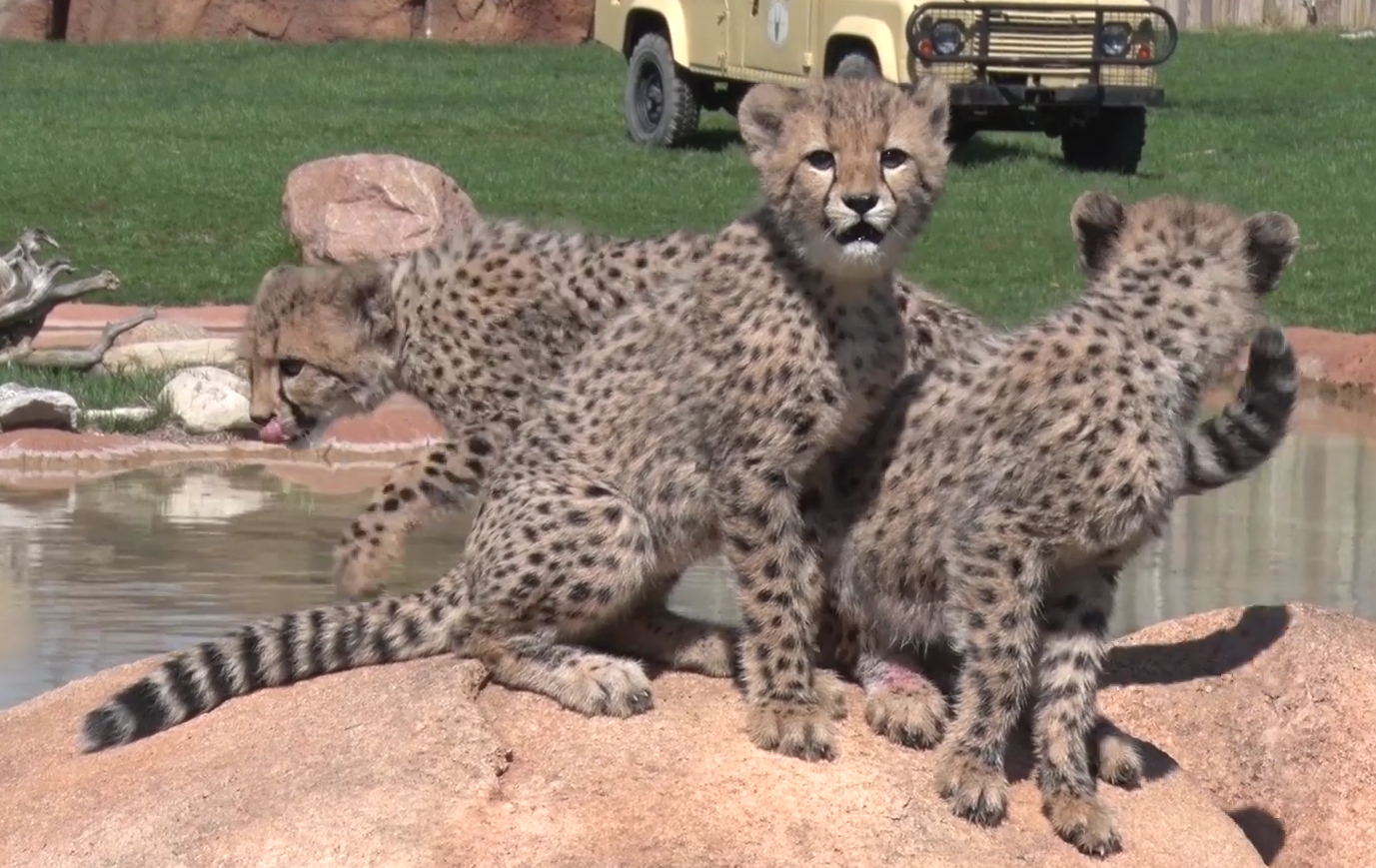

On December 23, an ultrasound revealed the remarkable news: two fetuses were growing in Izzy, although none took hold in Ophelia. It was only the third time scientists had ever attempted this procedure. Pierre Comizzoli, research biologist at SCBI and the Columbus Zoo veterinary team. Adrienne Crosier, a cheetah biologist with SCBI Dr. On November 21, the early stage embryos from Kibibi were then implanted into Izzy while embryos from both Kibibi and Bella were implanted into her sister, Ophelia, by Dr. Once Kibibi and Bella’s eggs were extracted, the eggs were then fertilized on November 19 in a Columbus Zoo laboratory using thawed semen originally collected in February 2019 from two cheetahs: a male from Fossil Rim Wildlife Center and another from SCBI. After the age of 8 years, cheetahs’ ability to reproduce declines significantly, and because Izzy and Ophelia are 3 years old, they have a better chance to safely deliver healthy, full-term cubs. Izzy and her sister Ophelia’s bloodlines are already well represented in the genetic registry, so they were selected as surrogates. Eggs (oocytes) were taken on November 19 from 6 1/2-year-old Kibibi and 9-year-old Bella, whose genes are considered to be valuable in maintaining a strong lineage of cheetahs in human care. IVF has become a more common process with humans and some other species, but it previously has been unsuccessful in large cats, including cheetahs and lions.įemale cheetahs Kibibi and Bella first received hormone injections on November 14 to stimulate follicle development.

The embryos are implanted into a female’s womb, where they may develop into fetuses. With in vitro fertilization, or IVF, sperm and eggs are fertilized in a laboratory and then incubated to create embryos. “This achievement expands scientific knowledge of cheetah reproduction, and may become an important part of the species’ population management in the future.” Randy Junge, the Columbus Zoo’s Vice President of Animal Health. “These two cubs may be tiny but they represent a huge accomplishment, with expert biologists and zoologists working together to create this scientific marvel,” said Dr.

The cubs have been observed nursing, and the male currently weighs in at 480 grams and the female weighs 350 grams. The care team performed a well check on the cubs on Friday, February 21 and determined that Izzy gave birth to a male cub and a female cub. Izzy, a first-time mom, has been providing great care to her cubs at this time. The cheetahs’ care team observed the births through a remote camera and continue to monitor Izzy and her cubs closely. While the cubs’ biological mother is Kibibi, the cubs were delivered on Wednesday, Februat 9:50 p.m. These efforts were also part of a breeding recommendation from the Association of Zoos and Aquariums’ (AZA) Species Survival Plan® (SSP) and the Cheetah Sustainability Program (CSP), developed to manage a sustainable population of cheetahs in human care. The births are the result of careful planning and innovative medical expertise through a partnership between the Columbus Zoo, the Smithsonian’s National Zoo and Conservation Biology Institute (SCBI) in Front Royal, Va., and Fossil Rim Wildlife Center in Glen Rose, Texas-three leading institutions with a commitment to conservation. Powell, OH – In a groundbreaking scientific breakthrough, two cheetah cubs have been born through in vitro fertilization and embryo transfer into a surrogate mother at the Columbus Zoo and Aquarium.


 0 kommentar(er)
0 kommentar(er)
